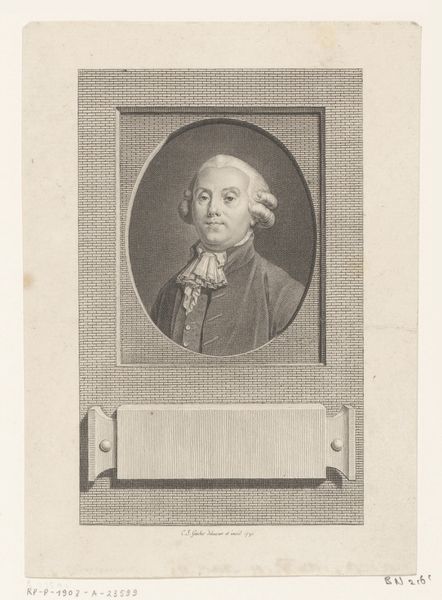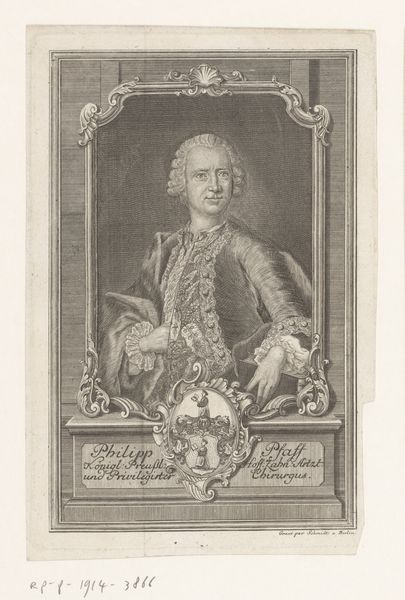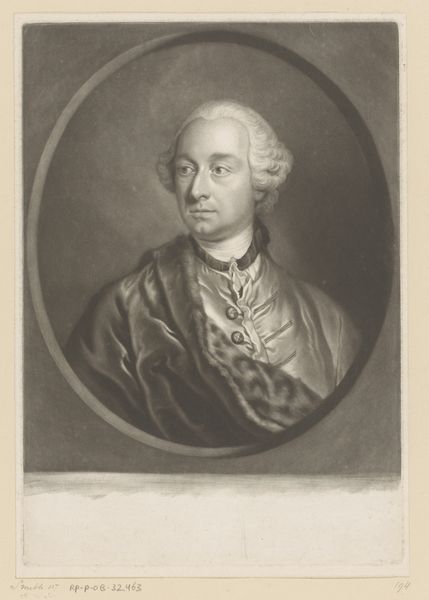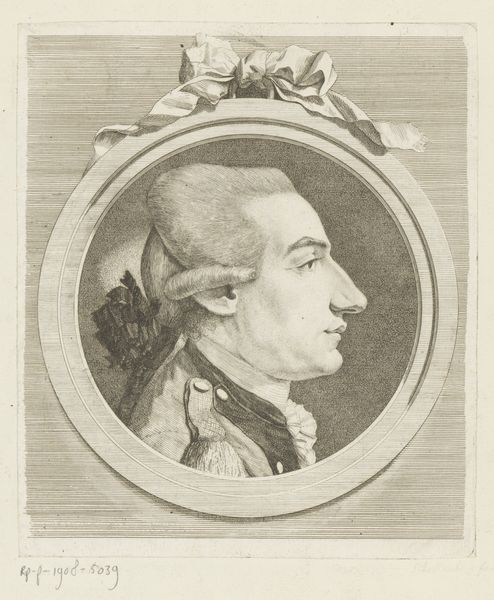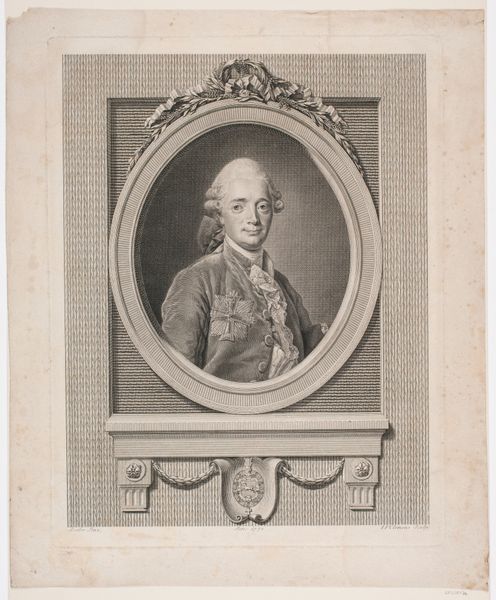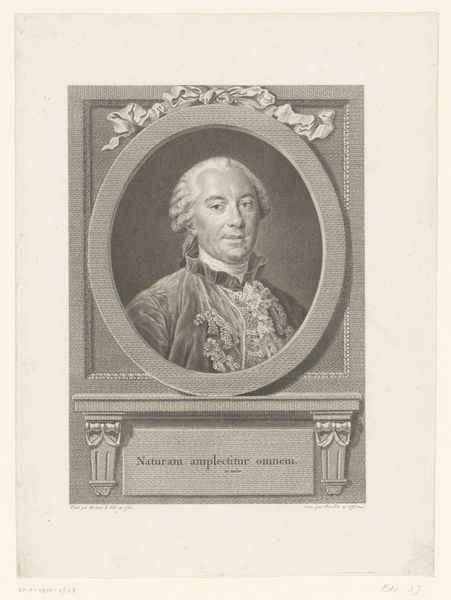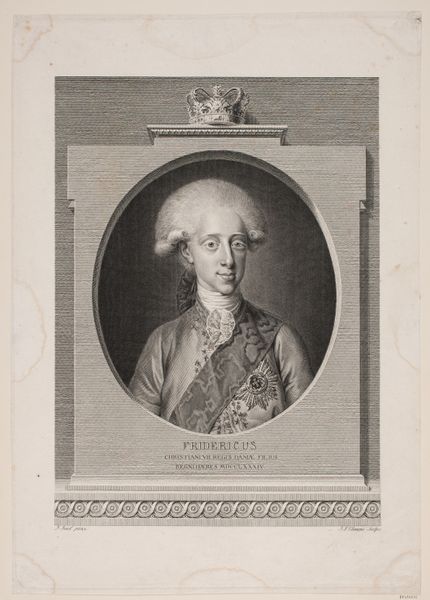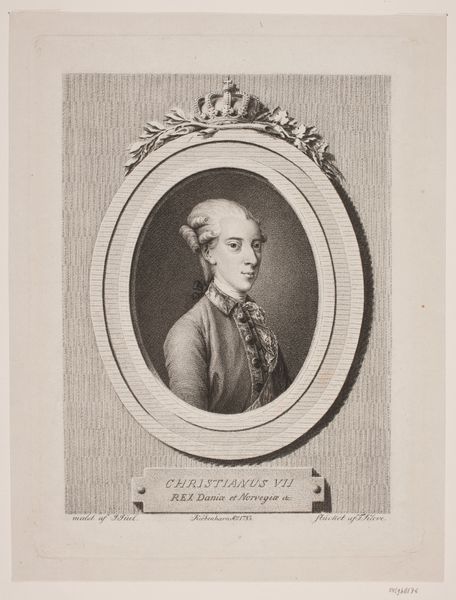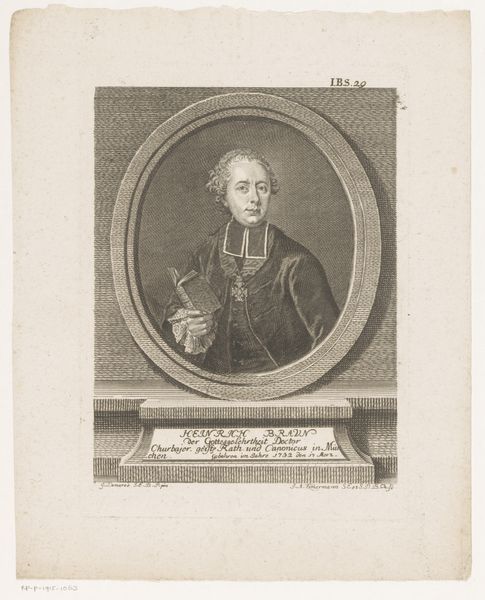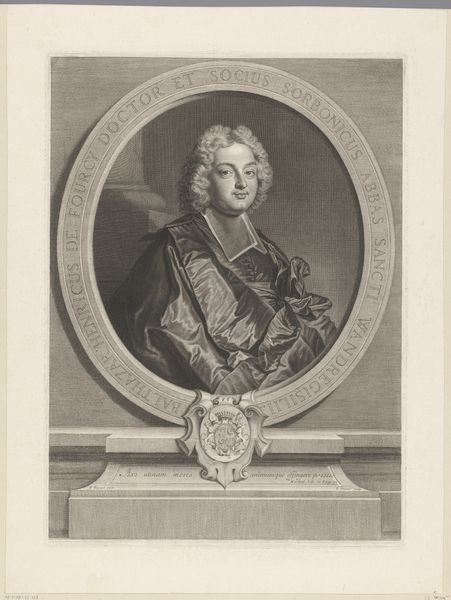
engraving
#
portrait
#
neoclacissism
#
history-painting
#
academic-art
#
engraving
Dimensions: height 136 mm, width 90 mm
Copyright: Rijks Museum: Open Domain
Editor: This is "Portrait of Jean-Baptiste-Claude Delisle de Sales," an engraving from 1796. I find the depiction very classical in its approach, it almost feels like a Roman coin but as a print. How do you interpret this work? Curator: The figure is framed within the aesthetics of Neoclassicism. Yet, considering the subject was a philosopher, we can appreciate that "Enlightenment" thinking was being packaged and sold in a very specific way. Have you thought about how the construction of historical figures has excluded many voices? Editor: It's definitely very one-sided; I am curious about that phrase encircling the figure, "Le Philosophe de la Nature". Does that tell us more? Curator: Exactly. In this period, philosophers advocated for natural rights and reason, often in opposition to the monarchy and church. Here, he is framed as the philosopher of nature; nature was a source of all rights and scientific reasoning. The historical context informs how it functions as a visual message and piece of propaganda, of sorts. But for whom? Editor: The ruling class or nobility maybe? Was he part of the revolutionary thinkers challenging the old ways? Curator: It’s interesting you should ask that. In the revolutionary context, these philosophical ideas are intertwined with concepts of freedom and self-determination, so it can be viewed from both angles, serving distinct agendas and audiences depending on social positioning. Can we also interpret this as a critique of aristocratic excess, aligning more with the burgeoning bourgeoisie who advocated meritocracy based on intellect? Editor: That's such an interesting reading. Thinking about art as more of a tool of revolution instead of pretty pictures. Curator: Precisely, art serves those who commissioned it, and in this moment, intellectualism itself was revolutionary. This allows a more nuanced appreciation of the social and historical power dynamics that shaped even the art of the late 18th century. Editor: That opens a lot of new questions. Thanks!
Comments
No comments
Be the first to comment and join the conversation on the ultimate creative platform.
